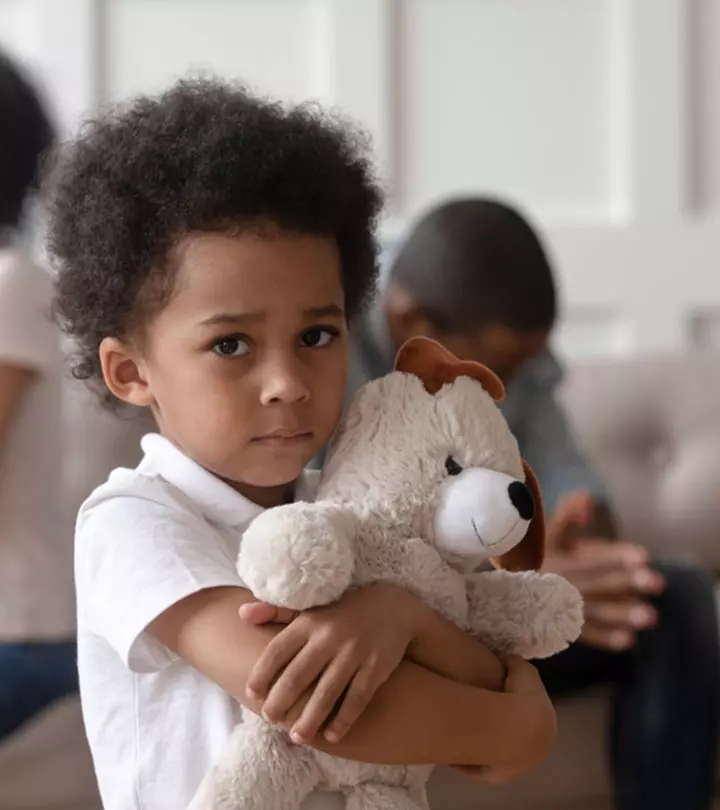
Image: Shutterstock
No parent would ever want their children to suffer or lack behind because of their parenting mistakes or unintentional negligence. While it may not be as visible as physical abuse, neglect is a serious issue that affects millions of children worldwide. Whether it’s failing to provide basic needs like food and shelter or ignoring a child’s emotional needs, the consequences of neglect can last a lifetime.
In this article, we’ll throw some light on everything you need to know about child neglect, including its different forms, signs to look out for, and ways to treat it. So, let’s dive in without further ado.
What Is Child Neglect?
Child neglect is a form of child abuse that occurs when a caregiver or parents fails to fulfill a child’s basic needs. Be it food, shelter, emotional support, or educational opportunities. It’s a sneaky and insidious form of abuse that often goes unnoticed because it doesn’t involve physical harm or direct contact with the abuser. But make no mistake, the effects of neglect can be long-lasting and devastating, affecting a child’s mental and physical health well into adulthood.
What Are The Types Of Child Neglect
Child neglect can have devastating effects on a child’s physical, emotional, and psychological well-being. Unfortunately, many types of child neglect can occur in a variety of contexts. It is essential to understand the different forms so we can better recognize when it happens and intervene appropriately.
- Physical negligence involves failing to provide adequate care for basic needs such as food, shelter, or clothing.
- Medical negligence is when the caregivers are not providing necessary medical attention, leaving children unsupervised for extended periods or exposing them to dangerous situations or environments; and/or ignoring signs that they may be ill.
- Another form includes educational negligence where parents fail to ensure their children attend school regularly or receive appropriate educational support at home if needed.
- Finally, emotional abuse also falls under this category which includes verbal insults, belittling behavior towards the child as well as withholding affection from them altogether.
What Are The Causes Of Child Neglect
There are many potential causes of child neglect:
- Poverty or financial struggles within the family unit.
- Substance abuse issues among parents or caregivers.
- Mental health problems such as depression or anxiety.
- Lack of education about parenting techniques and strategies for providing adequate care for children.
- Social isolation due to cultural beliefs or language barriers.
- Domestic violence in the home environment between adults living there with children present.
- Some parents may feel overwhelmed by their parental responsibilities due to being single-parent households without any support from extended family members nearby who could help out when needed.
What Are The Consequences Of Child Neglect On Children?
Child neglect can have several negative impacts on them:
- Malnutrition or failure to thrive due to lack of proper nutrition and healthcare.
- Cognitive delays due to lack of stimulation.
- Behavioral issues such as aggression or withdrawal.
- Social difficulties include poor communication skills and difficulty forming relationships with others.
- Emotional problems like depression or anxiety disorders.
- Academic struggles leading up to adulthood such as lower grades in school than peers who were raised without any form of abuse or neglect.
How To Treat Child Neglect?
Unfortunately, many parents are unaware of how to properly care for their children and may unintentionally neglect them. It is important to understand the signs of a child and provide help when needed.
The first step in treating child neglect is recognizing it as an issue. Signs such as poor hygiene or clothing, malnutrition, lack of medical attention, inadequate supervision or discipline, and frequent absences from school without explanation are all indicators that something might be wrong with a family dynamic at home. If you notice any concerning behaviors like these among your friends’ families or acquaintances’ families, reach out for help by contacting Child Protective Services (CPS) so they can investigate further.
Although once CPS has been notified about suspected cases of abuse or negligence within a family setting it’s also important to provide support services where possible, this could include providing resources such as food pantries/banks, after-school programs or mentoring opportunities, etc., which will enable parents to access much-needed assistance during difficult times when caring for their child.
Additionally, counseling services should also be offered both individually and collectively between parents & the affected minors, this way issues surrounding parenting styles & methods used can be discussed openly with professionals who specialize in understanding familial dynamics while offering guidance along the way too.
So, don’t be afraid to speak up if you suspect child neglect. It can be a tough decision to make, but it’s crucial to take action to protect the well-being of a child. By reporting neglect, you’re not only helping the child in question but also connecting their family with the resources and support they need to prevent future neglect from occurring. And do let us know if you’ve ever witnessed any case of child neglect and how’d you help solve it in the comment section below!

















